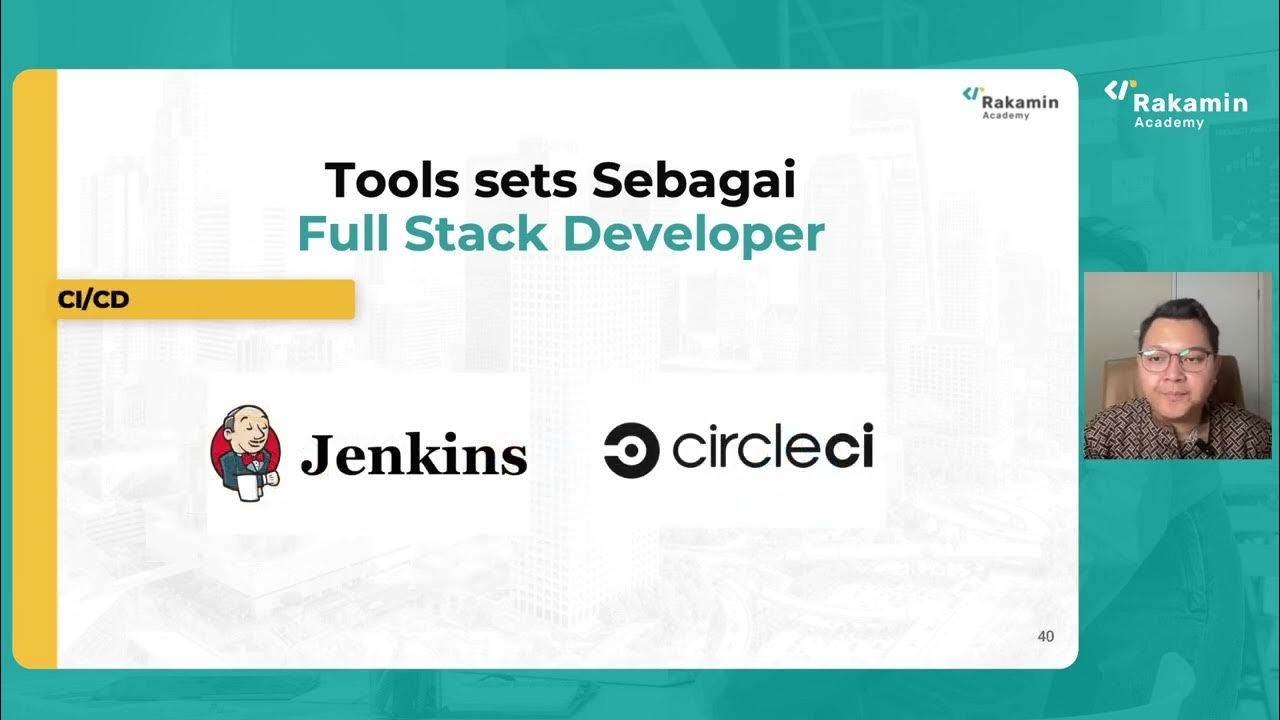Frontend Developer Roadmap 2024: 6 Clear Steps To Senior
Summary
TLDRThis video script outlines a comprehensive roadmap for aspiring senior frontend developers. It emphasizes the importance of mastering JavaScript, CSS, and HTML fundamentals, understanding modern JavaScript features, and learning programming paradigms like OOP and FP. The guide also covers essential frontend tooling, debugging techniques, testing strategies, and design patterns. Advanced topics include frontend security, performance optimization, deployment, and architectural concepts like micro frontends, SSR, and BFF. The script warns against chasing trends without a solid foundation and encourages building on strong fundamentals to achieve senior developer status.
Takeaways
- 🚀 **Fundamentals First**: Before mastering senior-level topics, ensure you have a solid grasp of JavaScript, programming, CSS, and DOM APIs.
- 🧠 **Mental Models**: Understanding the mental models and principles behind frameworks is crucial for a senior developer, not just chasing the latest libraries.
- 🔧 **Frontend Tooling**: Proficiency in tools like module bundlers, CSS preprocessors, and TypeScript is essential for a senior frontend developer.
- 🛠️ **Debugging Skills**: Move beyond 'console.log' and learn to use browser debugging tools, IDE debuggers, and framework-specific debuggers.
- 📝 **Testing Proficiency**: A senior developer should be well-versed in unit, integration, and end-to-end testing, adhering to the testing pyramid.
- 🏗️ **Design Patterns**: Familiarity with design patterns like component-based architecture, state management, and the virtual DOM is key for building scalable applications.
- 🔐 **Security and Authentication**: Knowledge of web security fundamentals, common attacks, and modern authentication techniques is necessary.
- 🌐 **Performance Optimization**: Senior developers should understand client-side and server-side optimization techniques to improve application speed.
- 📦 **Deployment and CI/CD**: Knowing how to set up deployment pipelines and use cloud services for scaling is a mark of a senior developer.
- 🌟 **Advanced Architectures**: Understanding micro frontends, server-side rendering, and backend-for-frontend architectures is crucial for senior roles.
Q & A
What is the main issue with most frontend roadmaps found on YouTube?
-Most frontend roadmaps found on YouTube are anti-senior, focusing on chasing shiny libraries and frameworks without explaining the mental models and fundamentals behind them, which is crucial for developers to advance to a senior level.
Why do many frontend developers struggle to reach the next level despite taking numerous courses and working on side projects?
-Many frontend developers struggle to reach the next level because they try to master senior-level topics without first having a strong grasp of the fundamentals, leading to a scattered knowledge base without depth.
What are the four main types of fundamentals in frontend development according to the script?
-The four main types of fundamentals in frontend development are JavaScript fundamentals, programming fundamentals, CSS fundamentals, and DOM APIs.
Why is it important for frontend developers to understand object-oriented programming (OOP) concepts?
-Understanding OOP concepts is important because they are fundamental to JavaScript's prototypal inheritance, which is a core concept in the language, and they apply to other programming languages as well.
What are the three key concepts in CSS that a senior frontend developer should understand?
-A senior frontend developer should understand the Box model, CSS specificity and inheritance, and modern layout techniques like Flexbox and Grid.
Why is networking knowledge important for frontend developers?
-Networking knowledge is important for frontend developers because it helps them understand how data is transferred over the internet, which is crucial for building efficient and effective web applications.
What is the significance of mastering module bundlers like Webpack for a senior frontend developer?
-Mastering module bundlers is significant because it allows senior developers to navigate the source code within applications, understand the build process, and configure JavaScript applications from scratch.
Why should a senior frontend developer be cautious about using Tailwind CSS without first mastering plain CSS?
-Senior frontend developers should be cautious about using Tailwind CSS without mastering plain CSS because it's important to understand the fundamentals of styling before leveraging utility-first CSS frameworks, which can obscure underlying CSS principles.
What are the key areas a senior frontend developer should focus on for frontend testing?
-A senior frontend developer should focus on unit tests, integration tests, and end-to-end tests, understanding the testing pyramid and utilizing framework-specific libraries for effective testing.
How does the understanding of design patterns like component-based architecture benefit a senior frontend developer?
-Understanding design patterns like component-based architecture allows senior developers to quickly learn new frameworks, understand the pros and cons of components, and work efficiently with them in building UIs.
Why is server-side rendering (SSR) becoming popular in the frontend community, and what challenges does it pose?
-Server-side rendering is becoming popular for improving performance and SEO by sending a pre-rendered version of the application to the client. The challenge it poses is ensuring that the server-rendered output matches the client-rendered output, as JavaScript applications were not originally designed for server-side rendering.
Outlines

Esta sección está disponible solo para usuarios con suscripción. Por favor, mejora tu plan para acceder a esta parte.
Mejorar ahoraMindmap

Esta sección está disponible solo para usuarios con suscripción. Por favor, mejora tu plan para acceder a esta parte.
Mejorar ahoraKeywords

Esta sección está disponible solo para usuarios con suscripción. Por favor, mejora tu plan para acceder a esta parte.
Mejorar ahoraHighlights

Esta sección está disponible solo para usuarios con suscripción. Por favor, mejora tu plan para acceder a esta parte.
Mejorar ahoraTranscripts

Esta sección está disponible solo para usuarios con suscripción. Por favor, mejora tu plan para acceder a esta parte.
Mejorar ahora5.0 / 5 (0 votes)






